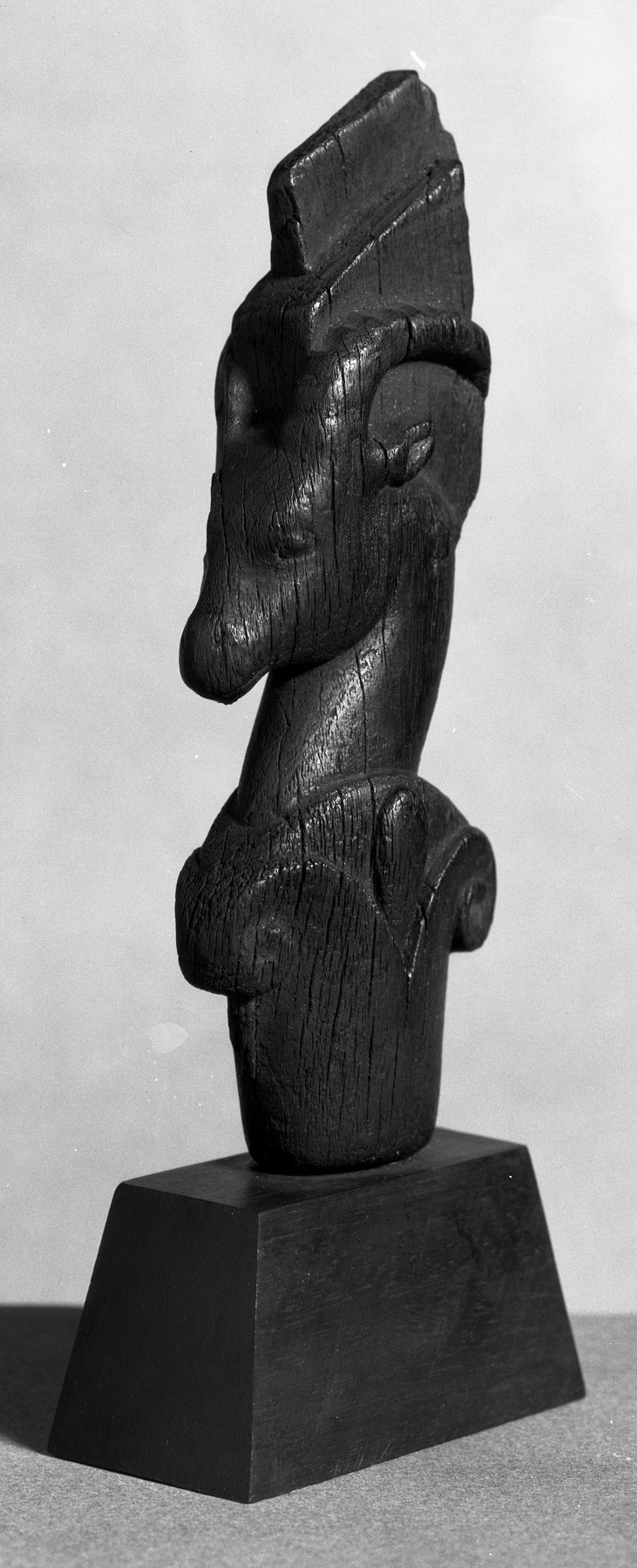Ibex Head Lyre Fragment
This carved wooden ibex head once decorated a lyre, a stringed instrument like a small harp that was adapted from Near Eastern cultures during the New Kingdom.
The head of an ibex is depicted emerging from an open lotus flower. Between the curved horns of the ibex is a projection with a rectangular tang. This tang would attach to the crossbar of the lyre. The angle of the piece and the shortness of its length suggest that it was fitted as the shorter support of an asymmetrical lyre. The ibex head would have faced outward. The piece is well preserved and the ibex is realistically rendered right down to a tiny projection representing a bearded tuft beneath the chin of the animal.
Provenance
Provenance (from the French provenir, 'to come from/forth') is the chronology of the ownership, custody, or location of a historical object. Learn more about provenance at the Walters.
Henry Walters, Baltimore [date and mode of acquisition unknown]; Walters Art Museum, 1931, by bequest.
Conservation
| Date | Description | Narrative |
|---|---|---|
| 6/13/1960 | Treatment | cleaned; coated |
| 8/18/1998 | Examination | survey |
Measurements
5 13/16 x 2 3/16 x 1 in. (14.8 x 5.6 x 2.6 cm)
Credit Line
Acquired by Henry Walters, by 1931
Location in Museum
Accession Number
In libraries, galleries, museums, and archives, an accession number is a unique identifier assigned to each object in the collection.
In libraries, galleries, museums, and archives, an accession number is a unique identifier assigned to each object in the collection.
61.270




